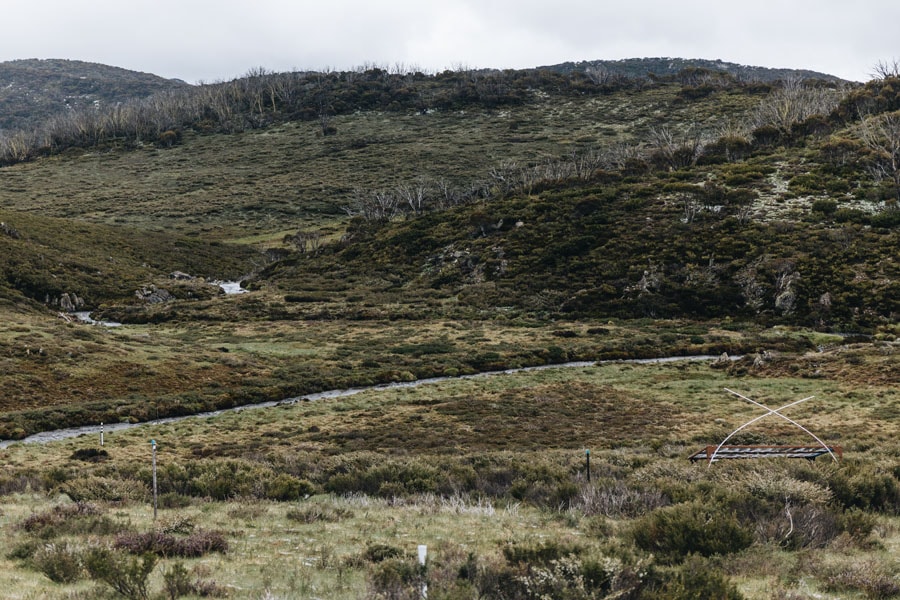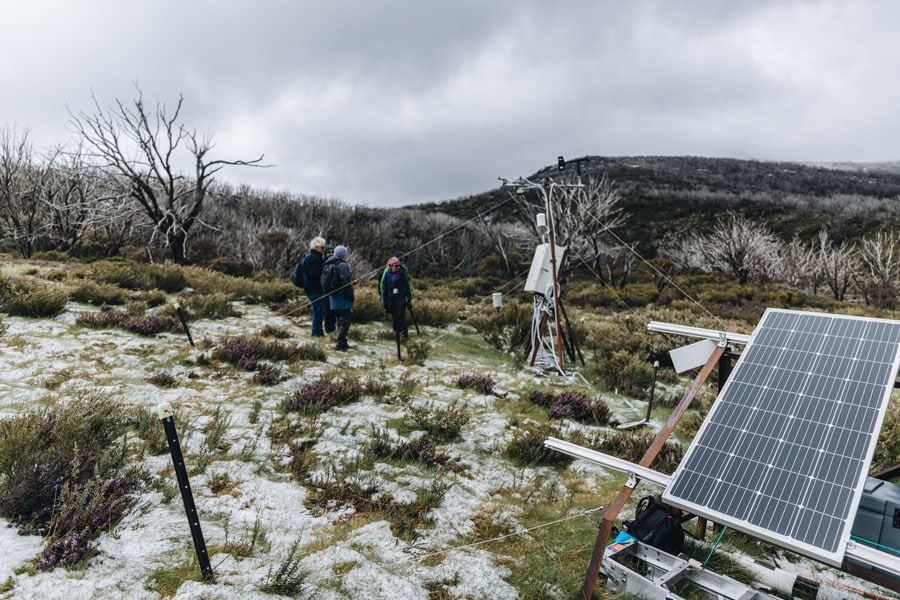The world’s mountain ranges, including the Australian Alps, define the water catchments that drive our societies, sequester carbon in montane forests and organic soils, are biodiversity hotspots and hold tremendous socio-cultural significance. Mountains support irrigated agriculture to provide food for more than half of the world’s population either through direct surface runoff, or groundwater recharge. In Australia alone, the Alps provide more than $10B/yr in water to the national economy. The importance of that freshwater for a warming and increasingly drought-prone continent cannot be underestimated. The future of our high mountains thus has pervasive implications.
In December 2022, the Australian Mountain Research Facility (AMRF) was launched in frigid temperatures in the Kosciuszko National Park, timed to coincide with a symposium under the banner of the Australian Institute of Alpine Studies – a pre-existing network of like-minded researchers.
AMRF initially started as a collaboration of 5 partner Australian universities but has rapidly expanded and continues to attract interest from diverse parties. Development of the monitoring and experimental facility that spans high altitude regions in ACT, NSW, VIC, and TAS was made possible through an Australian Research Council Linkage Infrastructure, Equipment and Facilities grant (ARC LIEF).
Partnering with TERN, national universities, and state and federal governments, AMRF aims to support research in assessing the scope and effects of changing climate, water and fire management systems on ecosystem processes and their feedbacks, and to provide a structure for integrated research and management of Australia’s mountains.

AMRF has been designed to complement TERN’s existing national ecosystem monitoring research infrastructure. Director of AMRF and Australian National University (ANU) Plant Evolutionary Ecologist, Professor Adrienne Nicotra, is looking forward to the close collaboration and providing insights into ecosystem changes in Australia’s high elevation regions, which are not currently covered by TERN infrastructure.
“The AMRF sites have all been set up in close consultation with our colleagues at TERN. Each of the nine 1 ha plots was established using the TERN AusPlots protocol to map out the vegetation and take soils measurements. The AMRF infrastructure also includes two flux towers set up in consultation with the OzFlux team at TERN so that these data could feed directly into TERN data streams . These sites are completely complementary to the sites that TERN already has. There are no other flux towers feeding into OzFlux that are in high elevation grasslands.”
Each of the AMRF sites also hosts what is called an AMON station – the Australian Mountain Observation Network – and these stations collect a wide range of standard meteorological data such as temperature, wind speed, precipitation and humidity.
“In addition, they’re measuring snow depth, and then we also have a series of hydrological sensors that are looking at soil moisture and groundwater characteristics,” Prof Nicotra said.
“The idea is to establish a set of open access data streams that anyone who’s working in the mountains (and elsewhere) can make use of when they need climatic data for and to support their own research, but also so that we establish a long-term monitoring data set that we can observe over time and use to detect change in the mountains.”

Dr Zach Brown, Senior Technical Officer at AMRF, says that these AMON stations will be able to contribute to conservation and management modelling by monitoring soil carbon and ground water conditions.
“The soils in the Alps have a huge amount of carbon content locked into organic matter, so it’s an extremely cold, wet environment most of the time and that means that decomposition happens slowly, so you get this rich organic matter build up in the soil, and that allows for the mountains to be really good at holding onto water below ground. That organic matter allows for reliable rates of discharge from the mountains.
So, getting a better understanding of how those dynamics play out and how they’re going to be affected in the future by warming or drying conditions or vegetation and land use change, will help us understand what water is going to be available for human use in the future, and also how that’s going to dynamically feedback on plants and vegetation communities which of course rely on water.”
AMRF has sites that stretch from the ACT through New South Wales, Victoria and down into Tasmania. They are all in the subalpine or alpine vegetation and their locations provide a latitudinal gradient as well as an elevation gradient. By having these comparable datasets collected across all those different sites, AMRF is creating a useful resource for a wide range of disciplines and promote multi-disciplinary projects across ecosystem science. Data-streams are available online and field researchers are encouraged to use the sites and surrounds for on-ground field research.






